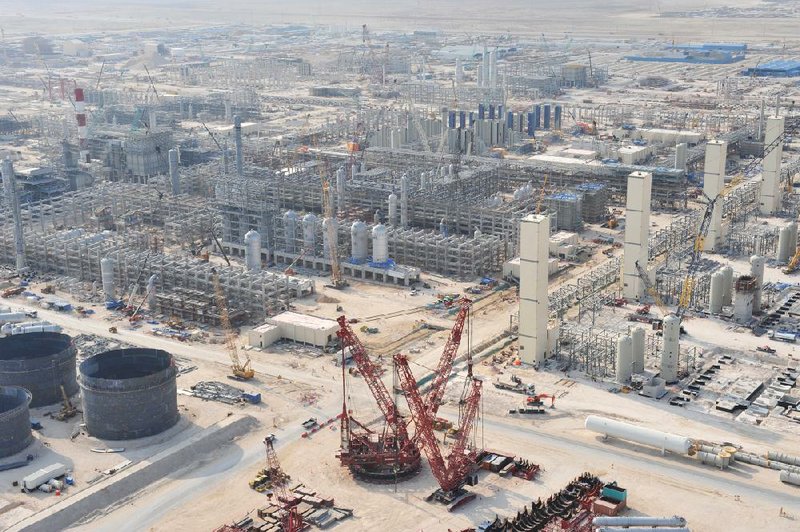WESTLAKE, La. — In an ambitious bet that the glut of cheap natural gas in the United States will last for many years, a South African energy company said last week that it would build America’s first commercial plant to convert natural gas to diesel and other liquid fuels.
The company, Sasol, which is based in Johannesburg, has been a pioneer in a technology that has tantalized energy scientists for decades over its potential to produce liquid fuels without using oil, which has historically cost far more than natural gas.
Having already built smaller plants in South Africa and Qatar, Sasol has designed its new Louisiana plant to produce 96,000 barrels of fuel a day using its “gas to liquids,” or GTL, technology. It will be the second-largest plant of its kind in the world, after Royal Dutch Shell’s Pearl plant in Qatar, and will cost $11 billion to $14 billion to build.
“By incorporating GTL technology in the USA’s energy mix, states such as Louisiana will be able to advance the country’s energy independence through a diversification of supply,” David Constable, Sasol’s chief executive, said at a news conference last week near the project’s planned location.
The facility will include a gas processing plant, a chemical plant and a refinery. All are required to perform the alchemy of converting natural gas into diesel, jet fuel and other products.
What makes this southwestern corner of Louisiana attractive to Sasol is its proximity to bountiful shale gas fields just north of here and west in Texas. A boom in shale drilling has reduced the price of natural gas in the United States in the past four years by more than two thirds, encouraging many energy and chemical companies to build and expand manufacturing plants around the Gulf of Mexico to produce a variety of petrochemicals.
Sasol estimated that the plant would create at least 1,200 permanent jobs and 7,000 construction jobs. Production is scheduled to begin in 2018. The state encouraged the project with more than $2 billion worth of tax credits and other incentives.
The company said it would put off previously announced plans to build a separate gas to-liquids plant in Canada, giving priority to the Louisiana effort. The track record for the technology, conceived by German scientists in the 1920s, is not encouraging, mainly because of a history of construction cost overruns.
Shell’s Pearl plant in Qatar, built with Qatar Petroleum for $19 billion, was over budget by a factor of three and has had stubborn maintenance concerns. Many other oil companies have looked at the process and declined to make the huge investments necessary.
Only a handful of gas-to liquid plants operate commercially in Malaysia, South Africa and Qatar, and they collectively produce a bit more than 200,000 barrels of fuels and lubricants a day - the equivalent of less than 1 percent of global diesel demand.
Nevertheless, Shell is considering building its own GTL plant on the Gulf Coast. Sasol and the Malaysian oil company Petronas are building a plant in Uzbekistan, and Sasol is joining Chevron to build one in Nigeria. Rosneft is planning a pilot project in Russia.
Profits have been elusive for the technology. To make it financially work, natural gas prices must remain low and prices for oil, diesel and jet fuel must remain high for a prolonged period.
Natural gas and diesel prices have historically been very unpredictable, and if enough companies build gas to-liquids plants or find other uses for natural gas, demand will rise, putting upward pressure on prices.
In the United States, various companies have plans to build natural gas export terminals and promote more use of compressed natural gas for vehicles, as is done in many countries like Pakistan, Iran and Argentina.
“If you didn’t have cost overruns, and if you didn’t have maintenance unscheduled downtime, if everything worked perfectly, then GTL plants look pretty good on paper,” said Don Hertzmark, an international energy consultant who has worked on gas to-liquids and other natural gas projects for 30 years. “These plants are only economic with very low gas prices.”
Hertzmark said that, with modest construction cost overruns, companies could make a decent profit on a gas to-liquids plant. He said that at today’s price for natural gas in the United States, about$3.60 per thousand cubic feet, a company would need a retail price for diesel fuel of more than $4 a gallon - near the average price today - to make the process profitable.
At the news conference last week, Louisiana Gov. Bobby Jindal said the Sasol project, which also includes a separate $5 billion ethane cracker to produce plastics and solvents, would be the largest manufacturing project in the history of Louisiana and one of the largest ever in the United States.
“The global financial markets will be watching,” Jindal said.
Business, Pages 21 on 12/10/2012

